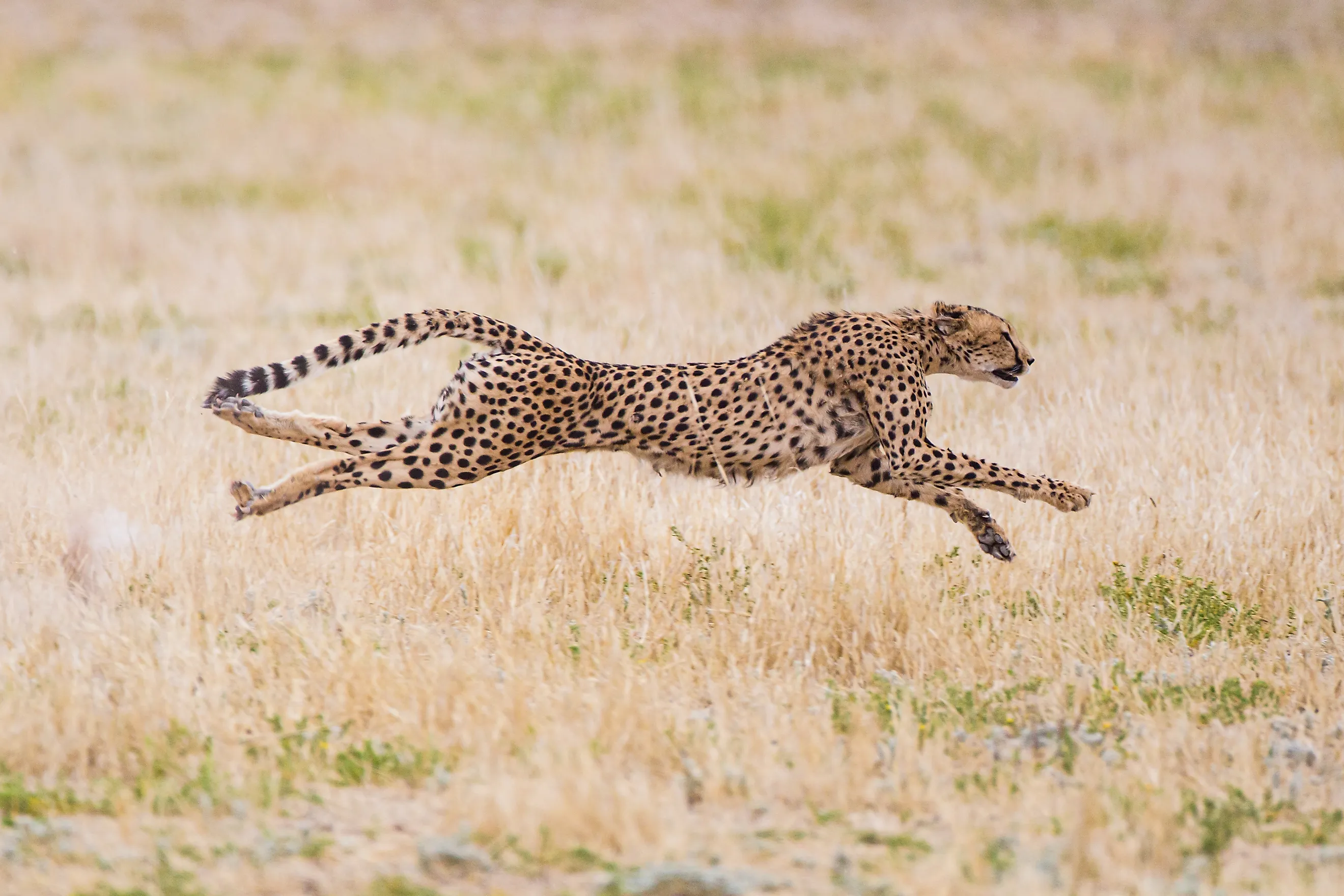
Why Are Cheetahs So Fast?
Cheetahs (Acinonyx jubatus), the planet’s fastest land animals, are undoubtedly nature's perfect sprinters. These fast members of the large cat family are native to Africa and a small region of Iran and have fascinated humans for centuries with their ability to run at speeds of up to 70 miles per hour (110 kph).
How does that compare to other species? Well, if a cheetah were to race against other animals, it would leave them in the dust. For example, if a cheetah entered the Kentucky Derby, the world’s best-known horse race, it would likely get around the course twice as fast as a thoroughbred, with its top speed of about 45 mph. Even the fastest human sprinter, the incredible Usain Bolt from Jamacia, who holds the world record at just under 28 miles per hour, would appear sluggish (or possibly even dinner!) in comparison. This amazing speed and agility are thanks to various evolutionary features that allow the large cat to the big cat to reduce resistance and increase dynamic energy. In this article, let’s take a deeper look into how and why cheetahs are so fast.
Sleek by Design
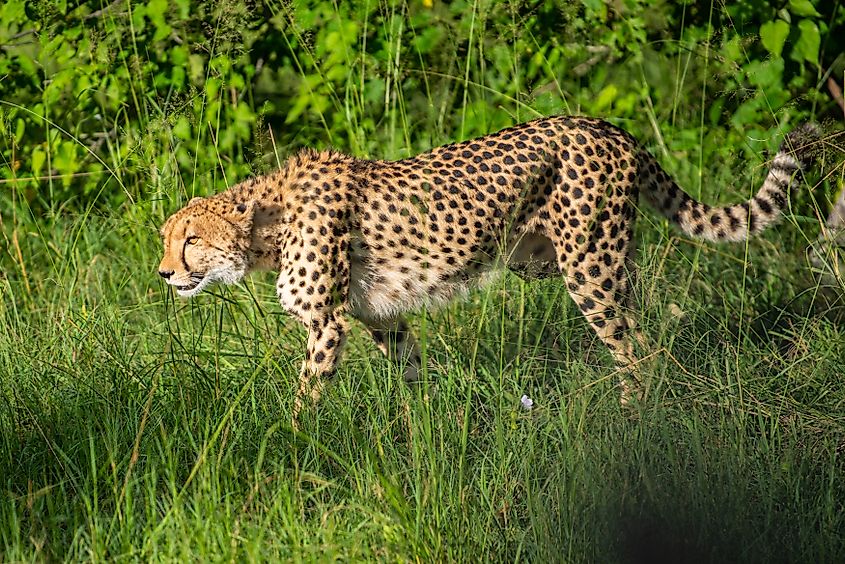
A cheetah’s body is designed for speed, with several features that reduce air resistance. Their small head, flat ribcage, and slim body help them move swiftly through the air, with aerodynamic qualities that minimize the drag that would otherwise slow them down. It’s for this reason that they can maintain high speeds for the duration of their sprints.
The cheetah’s streamlined shape also ensures that it can slice through the air with maximum efficiency, reducing the energy expenditure required to maintain its top speeds. This aerodynamic efficiency is crucial for sustaining its rapid pace long enough to follow behind and catch prey.
Muscle Bound
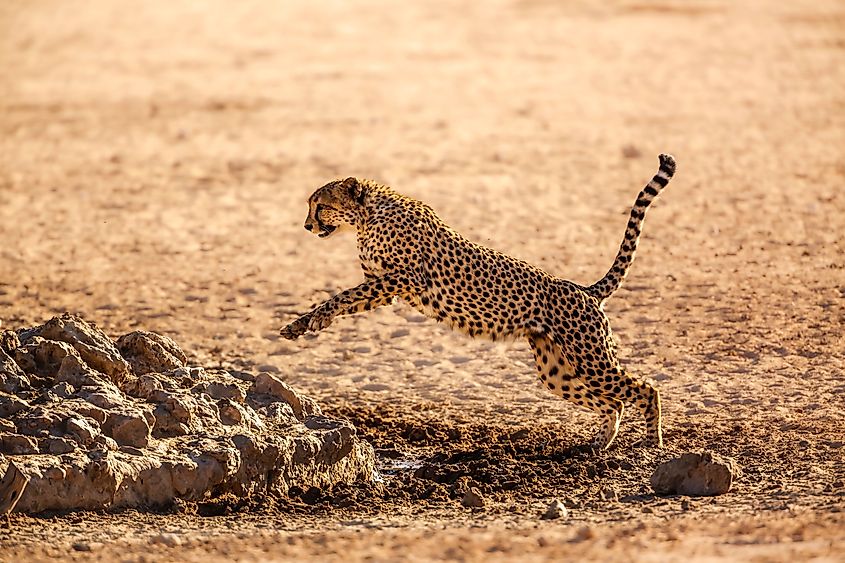
At the core of a cheetah's remarkable speed is its muscular build. Cheetahs possess a lightweight frame, which minimizes their muscles' movement burden, allowing for quicker acceleration. Their legs are long and powerful, filled with a high concentration of fast-twitch muscle fibers that provide the explosive power needed for rapid acceleration and high-speed pursuits.
Fast-twitch fibers are designed for short bursts of intense activity, as opposed to endurance. This muscle composition is essential for the cheetah's hunting style, which relies on short, intense sprints to capture prey. These muscles contract more rapidly and forcefully than slow-twitch fibers, enabling cheetahs to reach top speeds within seconds.
Cheetahs also benefit from a unique distribution of slow-twitch fibers in their muscles, which helps maintain posture and stability during high-speed chases. This combination of muscle types allows them to be both powerful and agile, key traits for their hunting strategy.
Spines That Flex
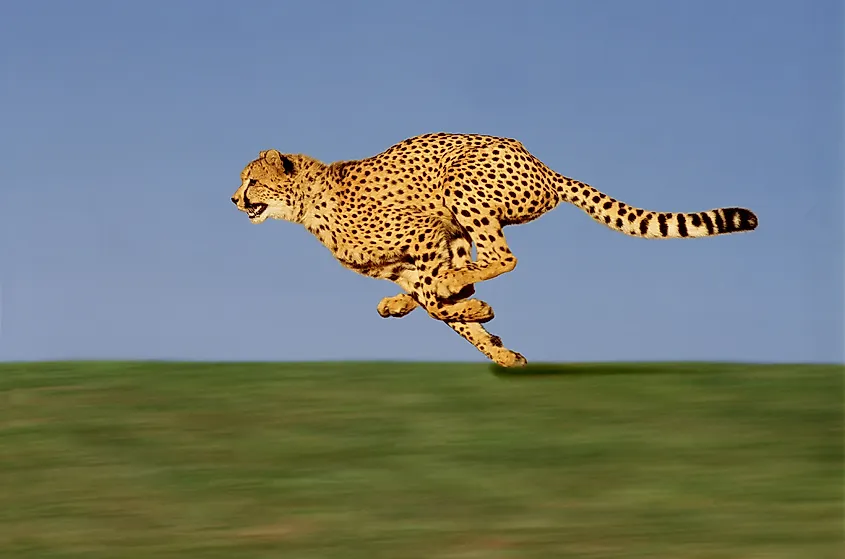
One of the most distinctive features of a cheetah is its flexible spine. Unlike other big cats, a cheetah’s spine acts like a spring, allowing for an extraordinary range of motion. When running, a cheetah's spine flexes and extends, significantly increasing the length of each stride. This elasticity lets them cover more ground with each step, enabling them to reach those impressive top speeds.
This spinal flexibility also aids acceleration, so when a cheetah launches into a sprint, its spine stretches, storing kinetic energy. As the spine contracts, this energy is then released, propelling the animal forward with immense force. This spring-like action, coupled with powerful muscles, allows these remarkable animals to accelerate from zero to 60 mph in seconds.
Oxygen Overdrive
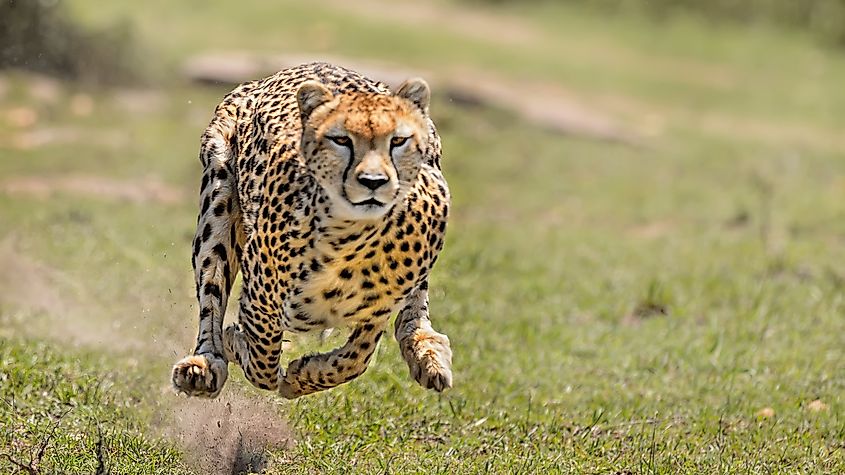
Can a cheetah maintain its high speeds? The short answer is “yes.” For sustained high-speed chases, cheetahs require plenty of oxygen, which is why they’re equipped with large nasal passages and lungs, enabling them to take in more oxygen with each breath. These features ensure that their muscles receive the necessary oxygen to function at peak performance while sprinting.
The cheetah's respiratory system is adapted for rapid air intake and exchange, and when running, its breathing rate can increase to as much as 150 breaths per minute. This high respiration rate supports the high metabolic demand of its fast-twitch muscle fibers, preventing it from tiring too quickly during a chase.
Staying on Track
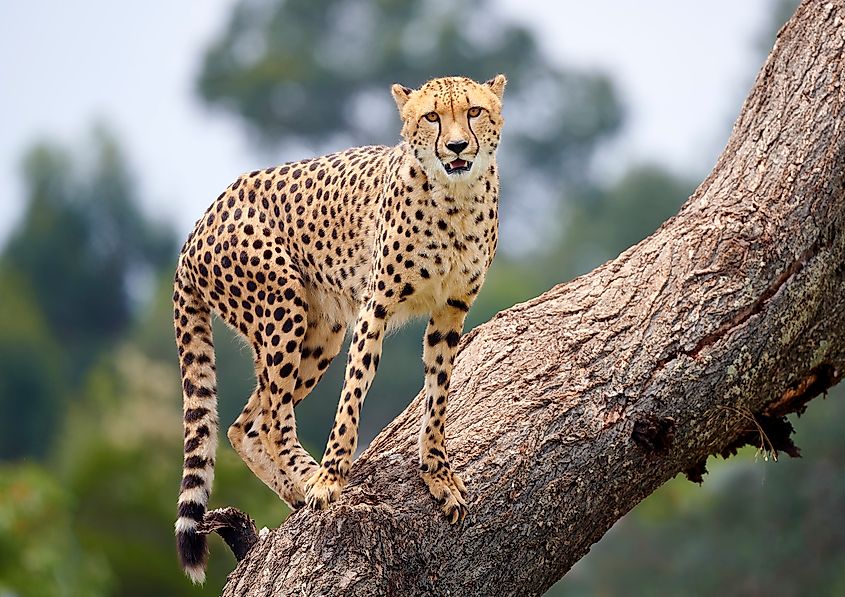
Unlike other big cats, cheetahs have semi-retractable claws that function a little like the cleats on an athlete’s shoes. Not only does this evolutionary trait provide better grip and traction while running at high speeds, but it’s also crucial for maintaining stability and agility during the rapid movements and sharp turns that occur while they’re chasing down their prey.
The semi-retractable nature of their claws ensures that they are always ready for action, whether sprinting or climbing. This state of constant readiness gives them an edge in both pursuit and evasion, as they can quickly shift directions without losing momentum.
Tail Spins
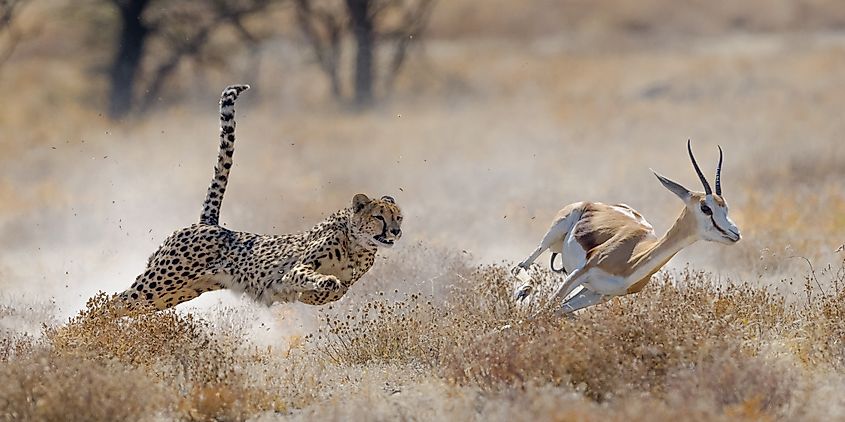
A cheetah’s long tail is another critical evolutionary adaptation designed for high-speed chases. Acting like a rudder on a ship, it helps them maintain balance and make sharp turns while running, another important factor when chasing agile prey capable of making sudden changes in direction.
The tail’s length and muscularity also enable it to counterbalance the animal’s body weight during high-speed maneuvers. This balance is vital for maintaining the cheetah’s stability and preventing falls during rapid, unpredictable chases. Its ability to swiftly change position helps the cheetah navigate terrain with precision and agility.
Eyes on the Prize
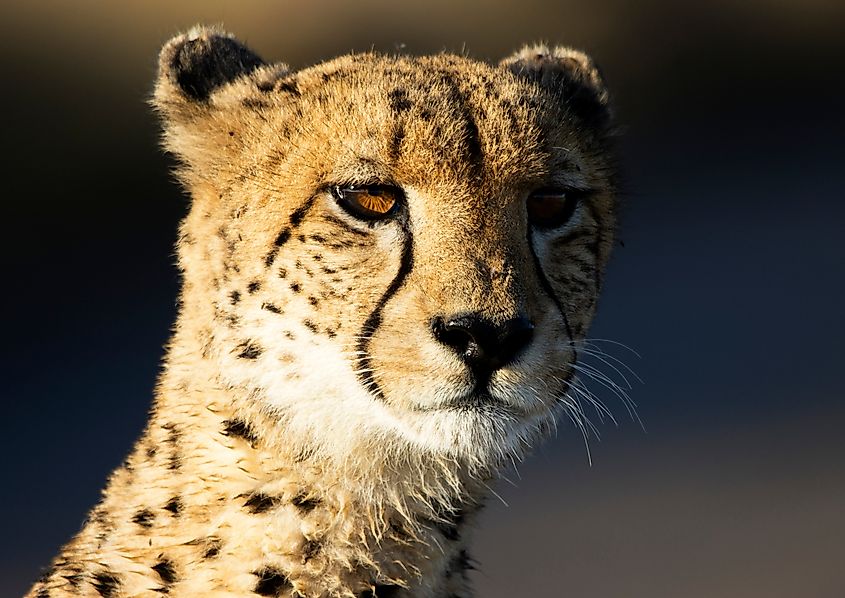
Cheetahs have exceptional eyesight, a factor that plays a significant role in their hunting strategy. Like a hunter with a set of binoculars, their keen vision allows them to spot prey from a distance, enabling them to plan their chase with precision. This visual acuity is essential for tracking fast-moving animals and making split-second decisions during the hunt.
The cheetah’s eyes are positioned for a wide field of view, enabling them to monitor their surroundings and anticipate the movements of their prey. This ability to see and react quickly is vital for successful hunts, allowing them to close the distance with their prey rapidly and accurately.
The Final Word
A cheetah's incredible speed results from a finely tuned combination of anatomical and physiological adaptations millennia in the making. From their powerful muscles and flexible spine to their specialized respiratory system and aerodynamic body, every aspect of the cheetah is designed for rapid acceleration and high-speed pursuit.
These adaptations make cheetahs not only the fastest land animals but also highly effective hunters capable of capturing swift and elusive prey. Their remarkable speed is a testament to the power of evolution and the intricate balance of traits that allow these magnificent creatures to thrive in their natural habitat.
Despite these evolutionary advantages, however, it’s worth noting that cheetahs are under threat from humanity’s continual infringement on their turf: the savannas, grasslands, and open forests of Africa. With only an estimated 6,500 specimens left in the wild, it’s vitally crucial that conservation efforts be enforced to protect their natural habitats to ensure their survival. Only then will we be able to continually marvel at the world’s fastest creatures in their natural environment.











